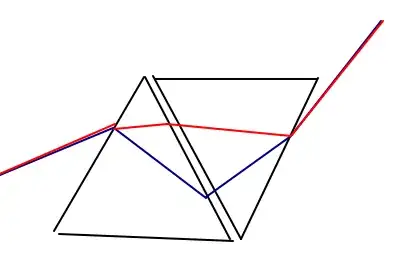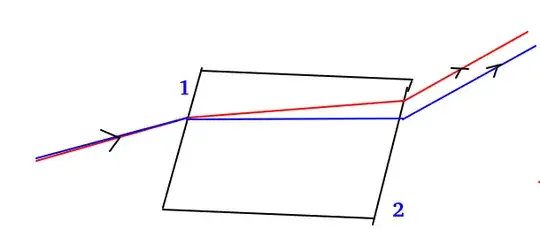When white light passes through a glass slab, Newton's assumption is that a slab is made of 2 glass prisms placed in opposite direction, such that dispersion of both is cancelled out and a white light is emitted back. I understood this concept well, but I am not able to understand this concept using other principles.
When a light ray strikes the face 1 of the glass slab, light cannot differentiate a prism and a glass slab. The surface and the medium only matters. So violet light has to bend more than red light, whether in slab or prism. In a slab there is no air in between . So the medium is same, and using principle of rectilinear propagation of light, we can say as there is no change in medium, light must move in the same path. (In the two prisms case there was a medium change, so the argument that red and violet coincide to form a white ray seems feasable). At the face 2, due to Snelll's law, both the rays are emmitted parallel to the incident ray, so both are parallel, thus never coincident. Then how do these rays join, and we get white light in the end?

